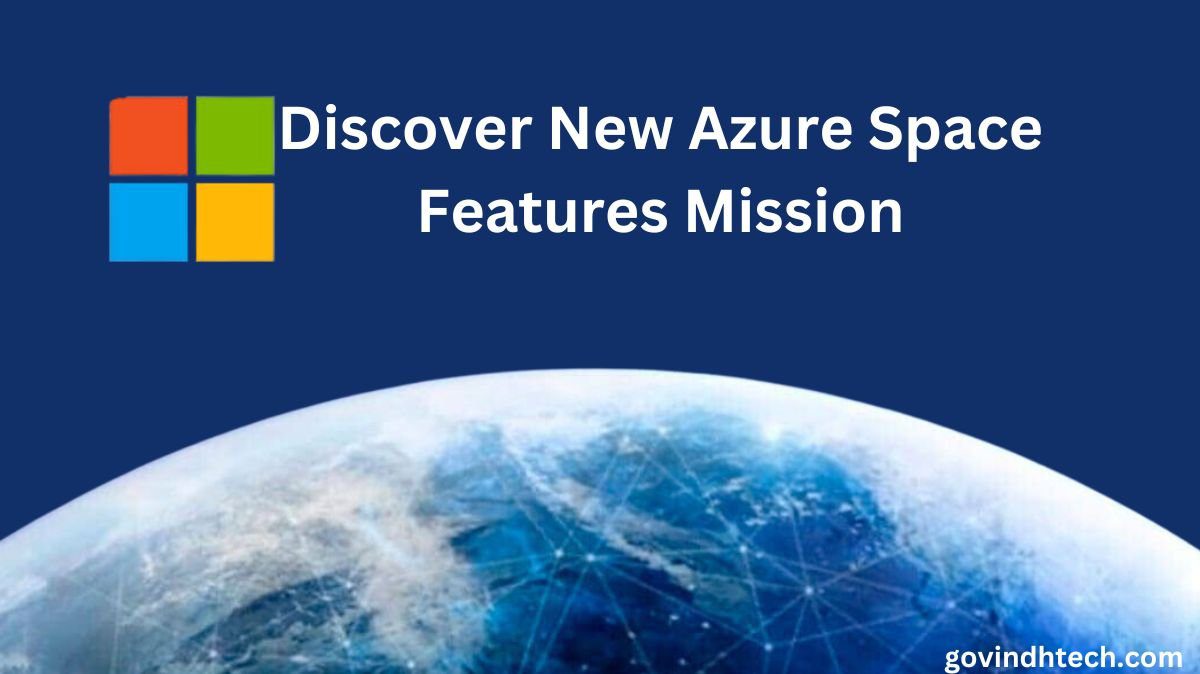Microsoft Azure Space gives you new mission opportunities
Microsoft Azure Space has had three key goals since launch:
- Access the Microsoft Cloud’s full power and potential from anywhere, at any security level. This includes working with interesting space startups like Muon Space and True Anomaly and government institutions like the US Space Force.
- Enable real-time analysis of petabytes of orbital data so customers may respond immediately to fulfill their goal.
- Allow developers to build, deploy, and run apps in orbit.
Customer and partner adoption and experimentation with Azure Space is revealing new and fascinating use cases. Today, that are delighted to share client stories and updates for Azure Orbital Ground Station, its software development kit, and Microsoft Planetary Computer. These experiences show how an accessible space layer can change how public and private organizations serve their purposes, but it’s early.
Satellites communicate via Azure Orbital Ground Station.
The operator faces many obstacles while delivering space data to Earth over a secure, durable ground network with minimal latency and high throughput. Ground station coverage limits satellite interactions, and setting up sufficient capacity is expensive.
Partner-powered, space-to-cloud transmissions with end-to-end space data downlink, processing, storage, analytics, and dissemination are possible with Azure Space. Azure Orbital Ground Station provides safe, quick access to communication products and services for satellite launch, operations, and decommissioning. Experience seamless mission operations with self-service contact scheduling in Microsoft Azure Space and a managed data channel.
Microsoft helps Muon Space launch its first two.
Muon Space chose Azure Orbital Ground Station as its sole ground supplier for MuSat-1, its first launch. Muon Space is preparing to launch MuSat-2 in early 2024 using Azure Orbital Ground Station to downlink experimental microwave sensor data. The US Space Force will receive ionospheric and space weather data from Muon Space.
Government Azure Orbital Ground Station
Commercial customers are utilizing Azure Orbital Ground Station more. Azure Space Orbital Ground Station is in preview in Microsoft Azure Government. Azure Orbital Ground Station in Azure Government lets government customers use a global partner ecosystem of ground stations, cloud modems, self-service scheduling, and managed data paths.
True Anomaly and Viasat use Azure Government’s Orbital Ground Station for space domain awareness.
True Anomaly chose Microsoft and Viasat to provide ground support for its launch of two rendezvous and proximity autonomous orbiting vehicles, Jackal. Using Azure Orbital Ground Station in Azure Government, True Anomaly will schedule satellite interactions at Viasat RTE stations.
Azure Orbital Ground Station’s controlled data channel simplifies global ground network connectivity.They can access all Viasat Real Time Earth locations on Azure Space with one click and specify where our spacecraft’s data should land, while Microsoft handles orchestration and communication. They can meet customers where they are in Azure Government.”
Offering fiber to Viasat sites
Microsoft is providing high-speed, real-time cloud connection to select Viasat RTE sites to broadcast multi-gigabit per second downlinks to clients swiftly and securely.
Learning from spatial data
Easy and economical ground infrastructure access will be crucial to serve clients’ mission-critical activities as space data volume and value expand. Customers will also be able to evaluate near-real-time space data.
Satellite connectivity and Earth observational data will be part of the cloud’s future. Satellite data and Earth-observing sensors will increase ground data insights.
See the series for:
- Using cloud and space to make data-driven decisions for your organization and missions.
- Microsoft Planetary Computer helps developers build tools for measuring, monitoring, modeling, and controlling healthy ecosystems, supporting global environmental sustainability and Earth research.
- The opportunity for Microsoft customers to maximize their Earth observation data with a new Azure Space data solution based on the Microsoft Planetary Computer.
- Allowing developers to build, deploy, and operate on-orbit
- Enabling any developer to construct and deploy space applications will lessen the space sector entrance barrier. Satellite operators can allow new business models and mission needs with Azure Orbital’s software development kit.
Loft Orbital is presently onboarding virtual mission customers for YAM-6.
Microsoft and Loft Orbital have been lowering space access restrictions for two years. Azure collaboration has been facilitated by “virtual missions,” which allow developers to use space capabilities without developing or launching hardware by building software applications.
Space Compass tests ideas rapidly with simulated missions
Space Compass, a multi-year joint venture between NTT, a Japanese ICT leader, and SKY Perfect JSAT Corporation, Asia’s largest satellite operator, will deploy space-edge computing and an ultra-fast optical data relay network. This lets space data customers use real-time data more efficiently in the cloud.
Space Compass has been working with Microsoft for three months to develop use cases to better understand and illustrate the value of on-orbit processing and how to shape their future space infrastructure to enable it.

